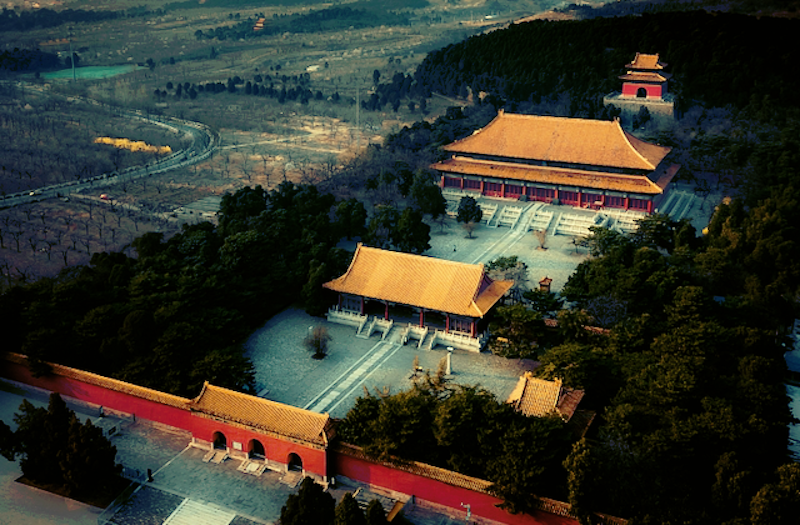Ming Tombs

The Ming Tombs, located at the base of Tianshou Mountain, are about fifty kilometers away from Beijing. These thirteen imperial tombs are built into the side of the mountain, creating a majestic and impressive collection of mausoleums. Established in 1409, these tombs have a history spanning over 300 to 600 years and across 40 square kilometers. The site is not only the largest imperial tomb complex in China, but in the entire world, housing the most tombs of emperors and empresses.
The Ming Tombs, collectively referring to the imperial mausoleums of the thirteen emperors after the Ming Dynasty relocated the capital to Beijing, include the Changling (Emperor Chengzu), Xianling (Emperor Renzong), Jingling (Emperor Xuanzong), Yuling (Emperor Yingzong), Maoling (Emperor Xianzong), Tailing (Emperor Xiaozong), Kangling (Emperor Wuzong), Yongling (Emperor Shizong), Zhaoling (Emperor Muzong), Dingling (Emperor Shenzong), Qingling (Emperor Guangzong), Deling (Emperor Xizong), and Siling (Emperor Sizong). Hence, they are known as the Thirteen Tombs. In 2003, the Ming Tombs were inscribed on the UNESCO World Heritage List. The scenic spots open to the public in the area are Changling, Zhaoling, Dingling, and Shenlu ("the Spirit Way"). It is one of the best-preserved imperial tomb complexes in China's history, and in 2011, China National Tourism Administration designated the Ming Tombs Scenic Area as a national 5A-level tourist attraction.
As a remarkable representation of ancient Chinese imperial tombs, the Ming Tombs showcase China's rich cultural heritage. Foreign experts have praised the layout of these tombs, which are constructed into the mountainside. Renowned British historian Joseph Needham once remarked that the imperial tombs in China represented such a significant architectural achievement that the entire layout was perhaps the greatest example of integrating architecture and landscape art. He described the Ming Tombs as the "greatest masterpiece", noting that "from the gate tower, one can admire the scenery of the entire valley and contemplate its solemn spectacle on an organic plane, where all buildings blend harmoniously with the landscape. It's a demonstration of the wisdom of the people, skillfully expressed by architects and builders". American urban planner Edmund N·Bacon also highly praised the artistic achievements of the Ming Tombs, stating that "the tombs of the Ming emperors are the most magnificent examples of 'motion' in architecture". He emphasized, "The layout of the tomb complexes built into the mountainside is magnificent, utilizing the entire space within the valley to commemorate the deceased monarchs." They vividly depicted the seamless integration of Ming Tombs architecture with the natural landscape.
(Source: Visitbeijing.com.cn)

